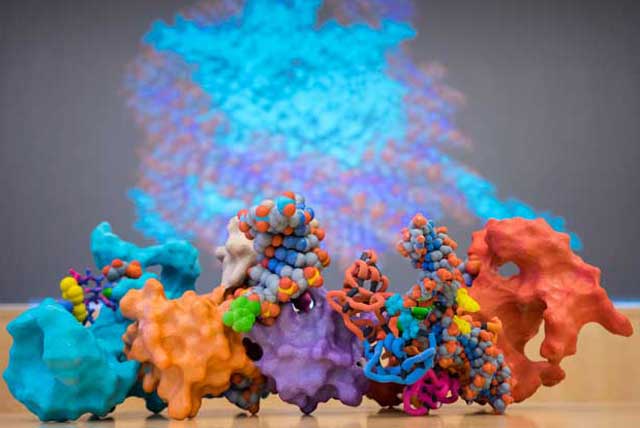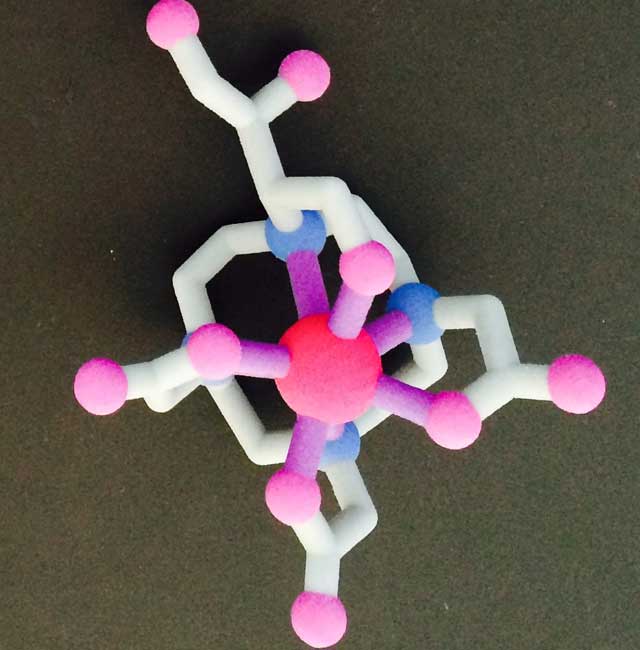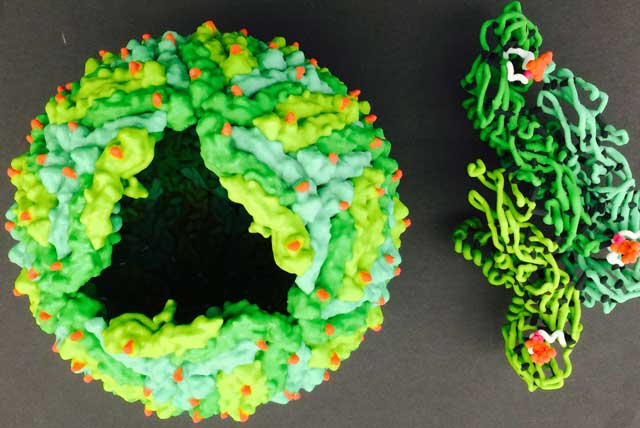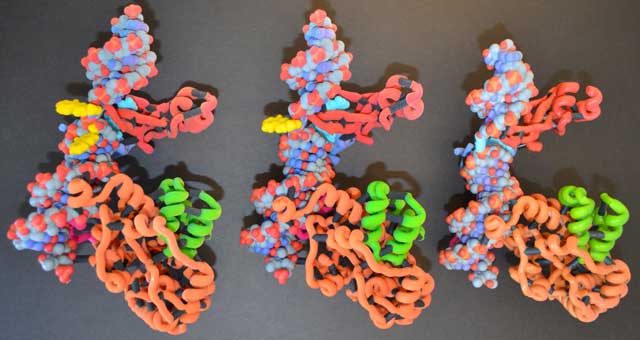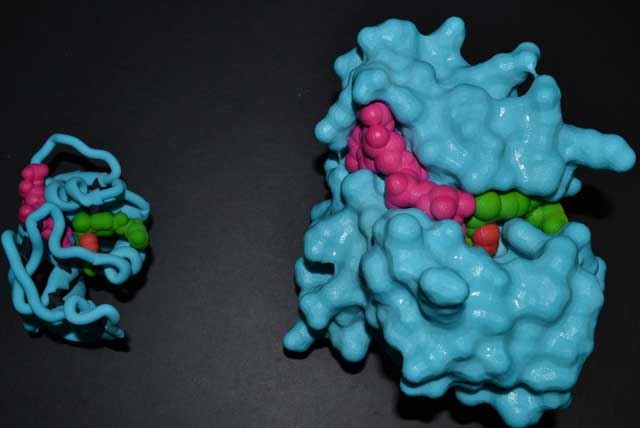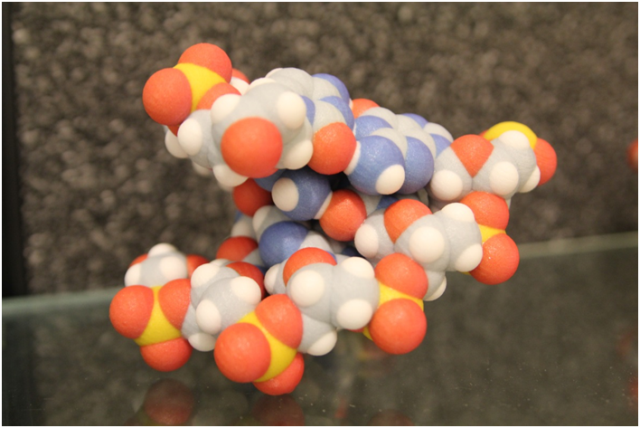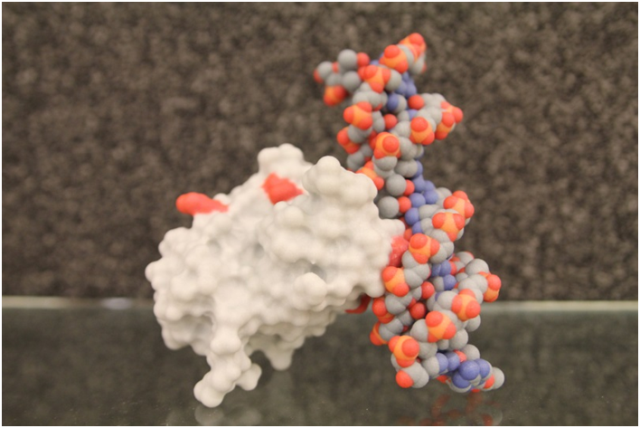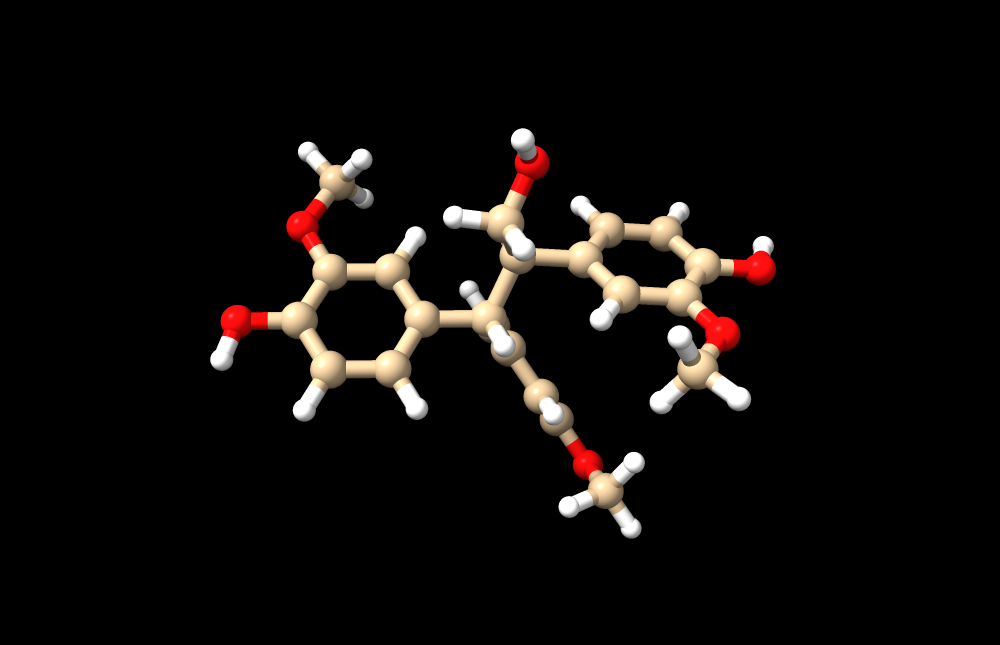Overview
What if you could hold a virus or an antibody in your own hands? Or actually watch as a cancer drug kinks a DNA, thus blocking its repair? You can.
At URI, we have created a one-of-a-kind program where students can animate, view, and print three-dimensional models to help them visualize and understand complex concepts and processes. Through this program, our faculty and students have discovered the incredible power of 3D printing and animation as effective teaching tools.
In 2003, we launched our “Teaching Animation Project” as a proof-of-concept project. Since then we have produced a number of teaching animation videos in pharmacy and related biomedical sciences.
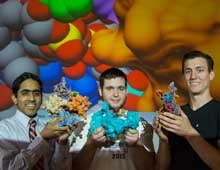 The quality of the pilot animations and their extensive use in classes and on the Internet attest to the enormous impact of the program on teaching and global outreach. To capitalize on this success, we have expanded our capability to include 3D printing and established a new, highly innovative “3D Center for Biomedical Sciences.”
The quality of the pilot animations and their extensive use in classes and on the Internet attest to the enormous impact of the program on teaching and global outreach. To capitalize on this success, we have expanded our capability to include 3D printing and established a new, highly innovative “3D Center for Biomedical Sciences.”
The main objective of our “3D Center” is “Making Science Visible in 3D,” helping students clearly conceptualize, visualize, and produce complex scientific ideas in 3D. Animation is an innovative hands-on teaching tool that adds to students’ learning experience out-of-class.
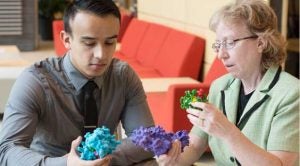 The “3D Center” not only helps produce teaching animations, but also promotes University-wide faculty/student collaboration. Students can animate, view, and print models—all in 3D. Animation, coupled with 3D visualization, will greatly improve the effectiveness of teaching and the retention of scientific concepts difficult to understand.
The “3D Center” not only helps produce teaching animations, but also promotes University-wide faculty/student collaboration. Students can animate, view, and print models—all in 3D. Animation, coupled with 3D visualization, will greatly improve the effectiveness of teaching and the retention of scientific concepts difficult to understand.
Our “3D Center” places the University of Rhode Island among a select few leading higher institutions that use such cutting-edge technologies in their curricula. The project is a result of collaborative efforts from Professors Bongsup Cho (Pharmacy), Marian Goldsmith (Biology, CELS), and Roy Bergstrom (Information Technology Services).
Contact
3D Animation
Our 3D animation program, which was established in 2003 with financial support from Champlin Foundations, has covered a variety of topics that range from Resistance of the Cancer Drug Iressa to the Mechanism of the Antidepressant Prozac.This has become a collaborative effort between faculty and students to produce educational tools to facilitate the explanation of complex topics to their peers.
Below are some examples of animations created by URI students and faculty. To see more, please visit our YouTube channel.
Mechanism of Iressa Drug Resistance
Mechanism of Prozac
Factors Affecting Drug Distribution in the Body
3D Printing Lab
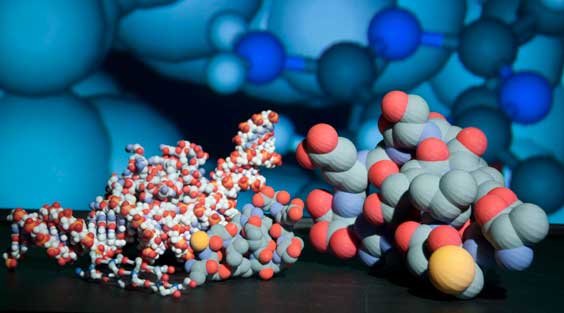
The success of our 3D Teaching Animation Program motivated us to embark on a new challenge: “3D Printer.” This is no ordinary printer; it literally produces physical models the student can create in solid color 3D.
As an example, we can develop animations/models that show students how joints work—and what happens when one is dislocated. This 3D production offers students an exciting, hands-on way to learn, providing the kind of visual teaching they seldom experience in science classes.
Students and faculty can actually hold the animated objects/molecules in their hands so they can touch and inspect the intricate details of cellular and molecular processes. The proposed “3D Center” will be equipped with modern technologies that allow the students to animate, view, and print all in 3D.
We acquired a Z-650 3D printer from Z-corporation (now “3D Systems”) in 2011 with financial support from the Champlin Foundations. This printer provides fast and affordable color 3D printing of molecules and other models.
Cost depends on volume of a model ($10 per cubic inches). Please make requisition to Chartfield Number 105-2606-7210. For more information, contact Bongsup Cho.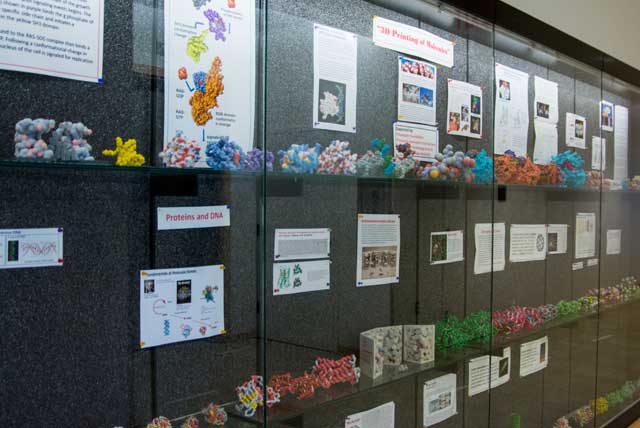
We Print Your Molecules
3D Teaching Lab
Tangible Student Access to the Molecular and Nano Scale Shape and Interaction
Much of science relies on the understanding of physical structures that are too small to be seen by the naked human eye. With financial support from 2012 Provost’s Innovative Teaching Funds, we have created hands-on laboratory sessions to be used in existing courses at URI.
We will provide experiential learning opportunities for students to generate hand-held physical models of molecular phenomena down to atomic resolution level. The resulting models will be further used to reach additional students in didactic classroom settings.
Both the generation and the use of the models will fully engage students in self-directed, creative, innovative, and interactive learning. This project is a result of collaborative efforts from Professors Roberta King (Pharmacy), Geoff Bothun (Chemical Engineering), and Bongsup Cho (Pharmacy).
3D Gallery



